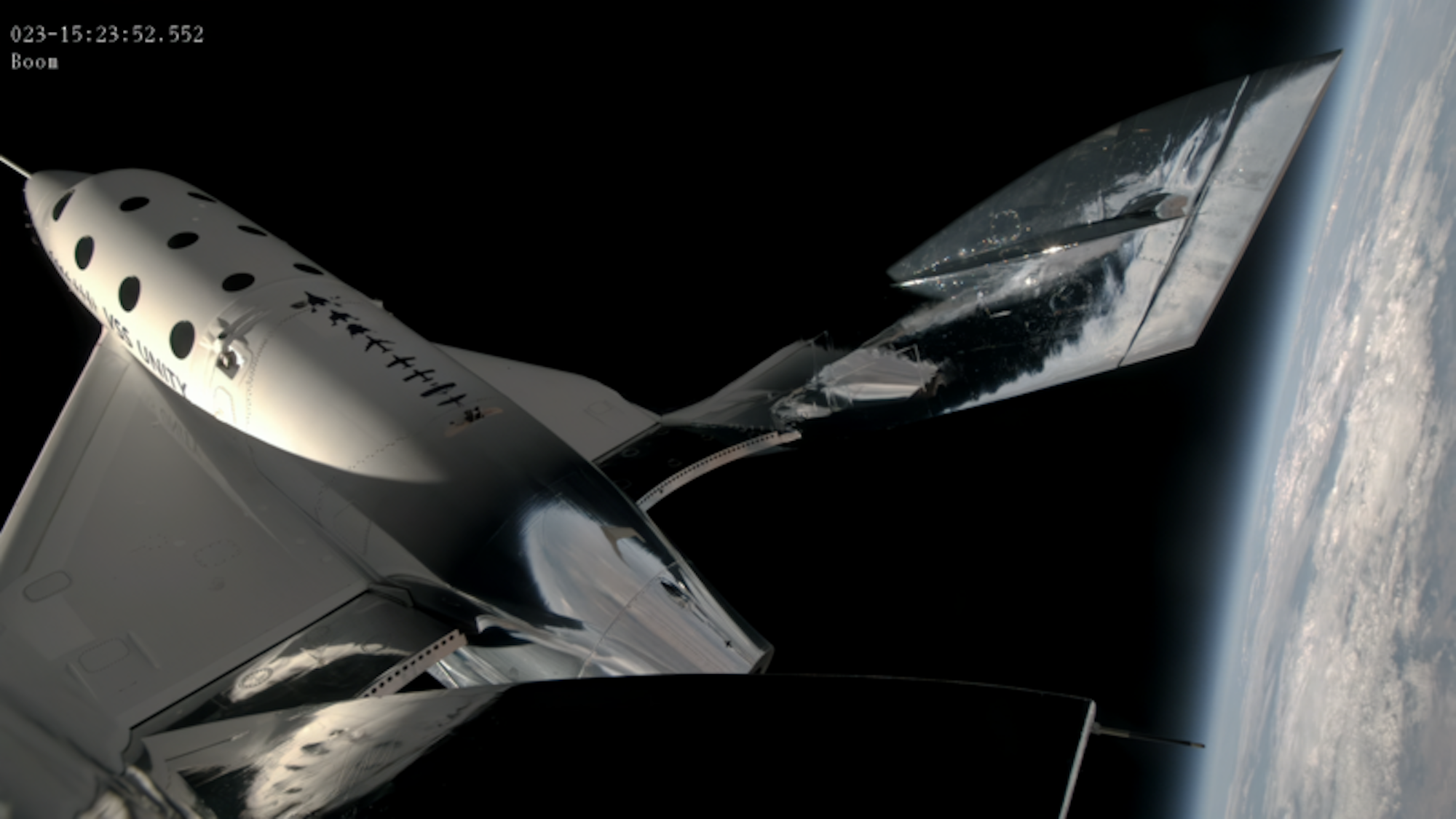

Space tourism is already becoming so commonplace that Virgin Galactic’s second private astronaut flight on September 8 went off without much fanfare. And although a brief press announcement only announced the names of its three-man passenger list after the trip, the recap didn’t mention Galactic 03’s historic “first” cargo—fossilized bones from two of humanity’s closest ancestors.
According to Tim Nash’s Virgin Galactic biography, the “entrepreneur, adventurer, conservationist and member of the Hubbard Council of The National Geographic Society,” carried with him the clavicle of a nearly 2-million-year-old Australopithecus sediba, as well as a roughly 250,000-year-old thumb bone from Homo naledi. Both hominid remains were previously discovered within the Cradle of Humankind UNESCO World Heritage Site outside Johannesburg, South Africa—sebedi is considered one of the potential candidates that presaged humanity’s Homo genus.
The initiative’s organizers, including researchers at the University of Witwatersrand, Johnnesburg, intended the gesture to represent “humankind’s appreciation of the contribution of all of humanity’s ancestors and our ancient relatives,” said Lee Berger, a National Geographic Explorer in Residence, Carnegie Fellow and Director of the Centre for the Exploration of the Deep Human Journey. “Without their invention of technologies such as fire and tools, and their contribution to the evolution of the contemporary human mind, such extraordinary endeavors as spaceflight would not have happened.”
[Related: Virgin Galactic’s second commercial flight sent three tourists to space’s edge.]
Berger’s son, Matthew, discovered the sebida clavicle in 2008 when he was 9 years old during an expedition alongside his father within the Cradle of Humankind heritage site. Matthew Berger traveled last week to Virgin Galactic’s Spaceport America in New Mexico to hand deliver the bones to Nash, a conservationist involved with human origins research. Caretakers stored both bone fragments within a carbon fiber container prior to their suborbital excursion.
“These fossils represent individuals who lived and died hundreds of thousands of years ago, yet were individuals who likely gazed up at the stars in wonder, much as we do,” Berger said in a September 8 statement via the University of Witwatersrand.
“The magnitude of being among the first civilians going into space, and carrying these precious fossils, has taken a while to sink in, during all of the preparations for the flight,” Nash said via the University of Witwatersrand statement, “But I am humbled and honored to represent South Africa and all of humankind, as I carry these precious representations of our collective ancestors, on this first journey of our ancient relatives into space.”
Nash, alongside Las Vegas real estate entrepreneur Ken Baxter and British engineer and racecar company founder Adrian Reynald, purchased their Virgin Galactic seats as far back as 2004 from company founder and multibillionaire Richard Branson. Tickets for the few minutes’ worth of suborbital weightlessness alongside views of the Earth’s curvature reportedly cost between $250,000 and $450,000.
“We sincerely hope it brings further awareness of the importance of our country and the African continent to understanding the journey of humankind that has led to this historic moment where commercial spaceflight is possible,” says Cradle of Humankind World Heritage Site CEO Matthew Sathekge said via University of Witwatersrand’s announcement.
